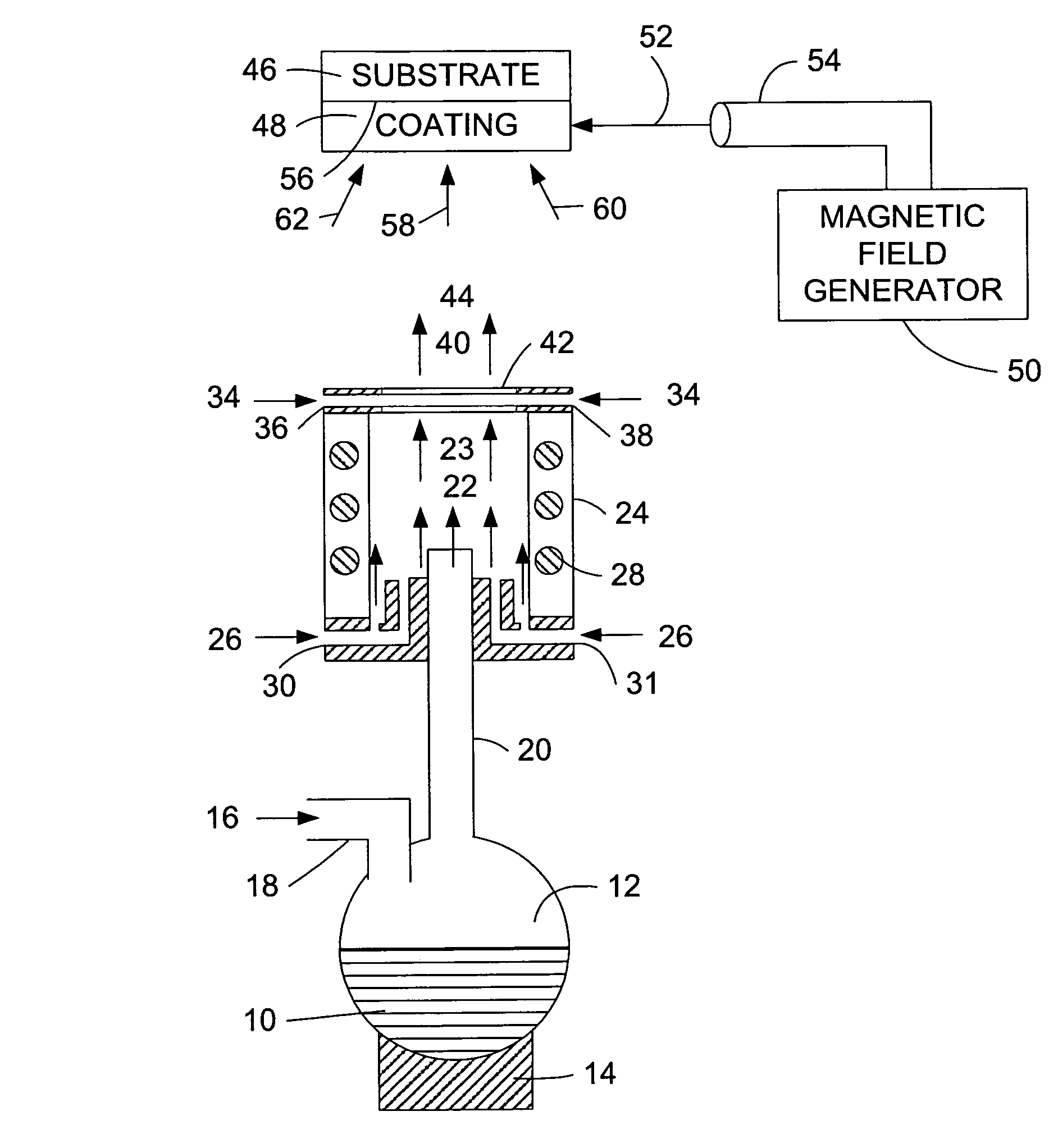Protective assembly
a technology of protection assembly and shielding plate, which is applied in the direction of magnetic bodies, ultrathin/granular films, therapy, etc., can solve the problems of difficult control of current delivered through shock, heart tissue near the point of contact with the electrode can be severely damaged, and the approach is not effective in limiting current flow, etc., to achieve the effect of limiting the current flow
- Summary
- Abstract
- Description
- Claims
- Application Information
AI Technical Summary
Benefits of technology
Problems solved by technology
Method used
Image
Examples
Embodiment Construction
[0040]FIG. 1 is a schematic illustration of one process of the invention which may be used to make nanomagnetic material. This FIG. 1 is similar in many respects to the FIG. 1 of U.S. Pat. No. 5,213,851, the entire disclosure of which is hereby incorporated by reference into this specification.
[0041]Referring to FIG. 1, and in the preferred embodiment depicted therein, it is preferred that the reagents charged into misting chamber 12 will be sufficient to form a nano-sized ferrite in the process. The term ferrite, as used in this specification, refers to a material that exhibits ferromagnetism. Ferromagnetism is a property, exhibited by certain metals, alloys, and compounds of the transition (iron group) rare earth and actinide elements, in which the internal magnetic moments spontaneously organize in a common direction; ferromagnetism gives rise to a permeability considerably greater than that of vacuum and to magnetic hysteresis. See, e.g, page 706 of Sybil B. Parker's “McGraw-Hil...
PUM
| Property | Measurement | Unit |
|---|---|---|
| temperature | aaaaa | aaaaa |
| frequency | aaaaa | aaaaa |
| frequency | aaaaa | aaaaa |
Abstract
Description
Claims
Application Information
 Login to View More
Login to View More - R&D
- Intellectual Property
- Life Sciences
- Materials
- Tech Scout
- Unparalleled Data Quality
- Higher Quality Content
- 60% Fewer Hallucinations
Browse by: Latest US Patents, China's latest patents, Technical Efficacy Thesaurus, Application Domain, Technology Topic, Popular Technical Reports.
© 2025 PatSnap. All rights reserved.Legal|Privacy policy|Modern Slavery Act Transparency Statement|Sitemap|About US| Contact US: help@patsnap.com



